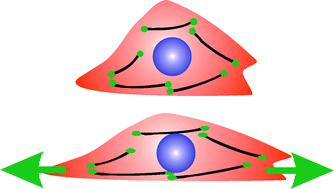Cell stretching devices as research tools: engineering and biological considerations
Abstract
Cells within the human body are subjected to continuous, cyclic mechanical strain caused by various organ functions, movement, and growth. Cells are well known to have the ability to sense and respond to mechanical stimuli. This process is referred to as mechanotransduction. A better understanding of mechanotransduction is of great interest to clinicians and scientists alike to improve clinical diagnosis and understanding of medical pathology. However, the complexity involved in in vivo biological systems creates a need for better in vitro technologies, which can closely mimic the cells' microenvironment using induced mechanical strain. This technology gap motivates the development of cell stretching devices for better understanding of the cell response to mechanical stimuli. This review focuses on the engineering and biological considerations for the development of such cell stretching devices. The paper discusses different types of stretching concepts, major design consideration and biological aspects of cell stretching and provides a perspective for future development in this research area.

- This article is part of the themed collection: Lab on a Chip Recent Review Articles


 Please wait while we load your content...
Please wait while we load your content...